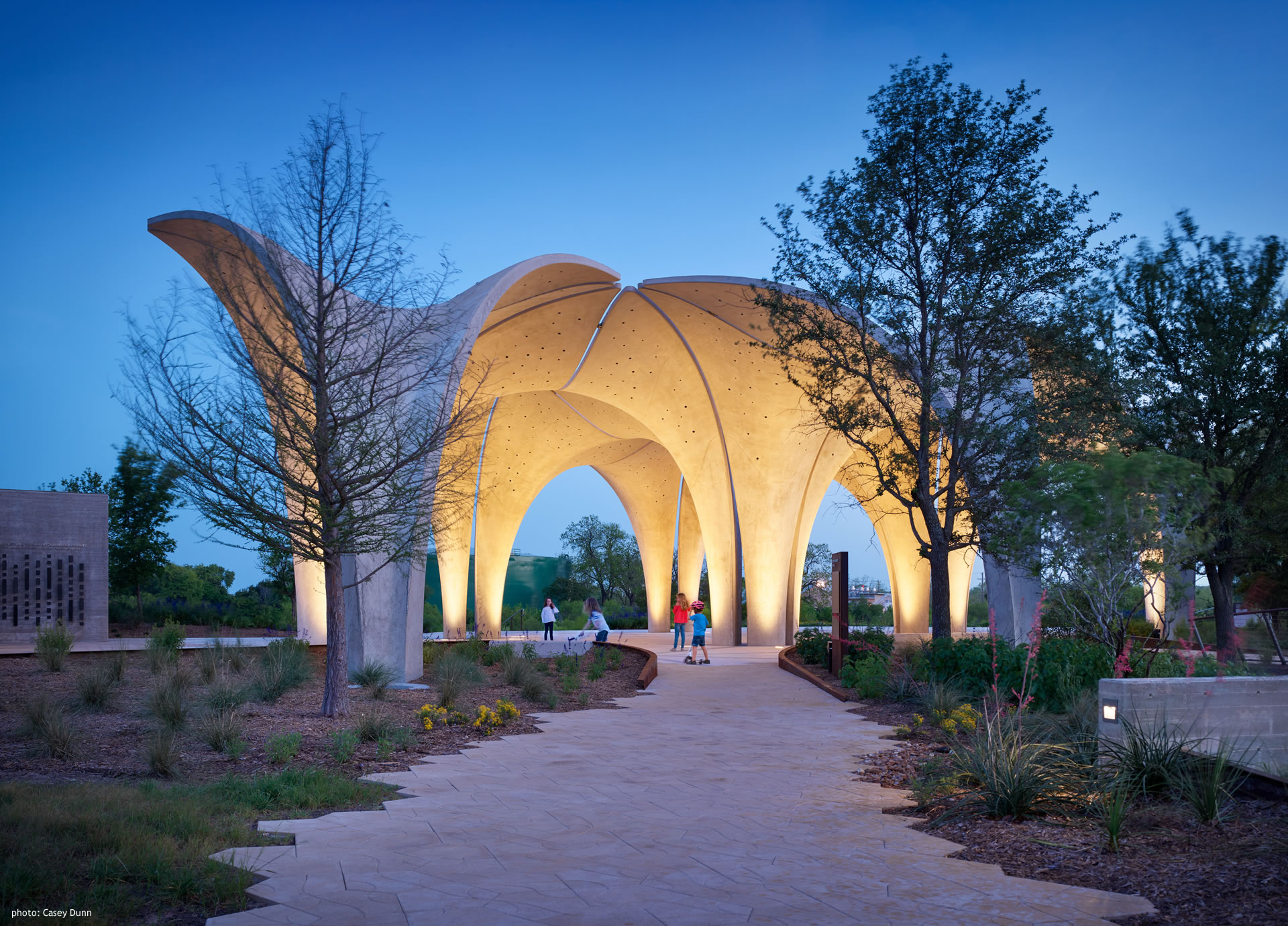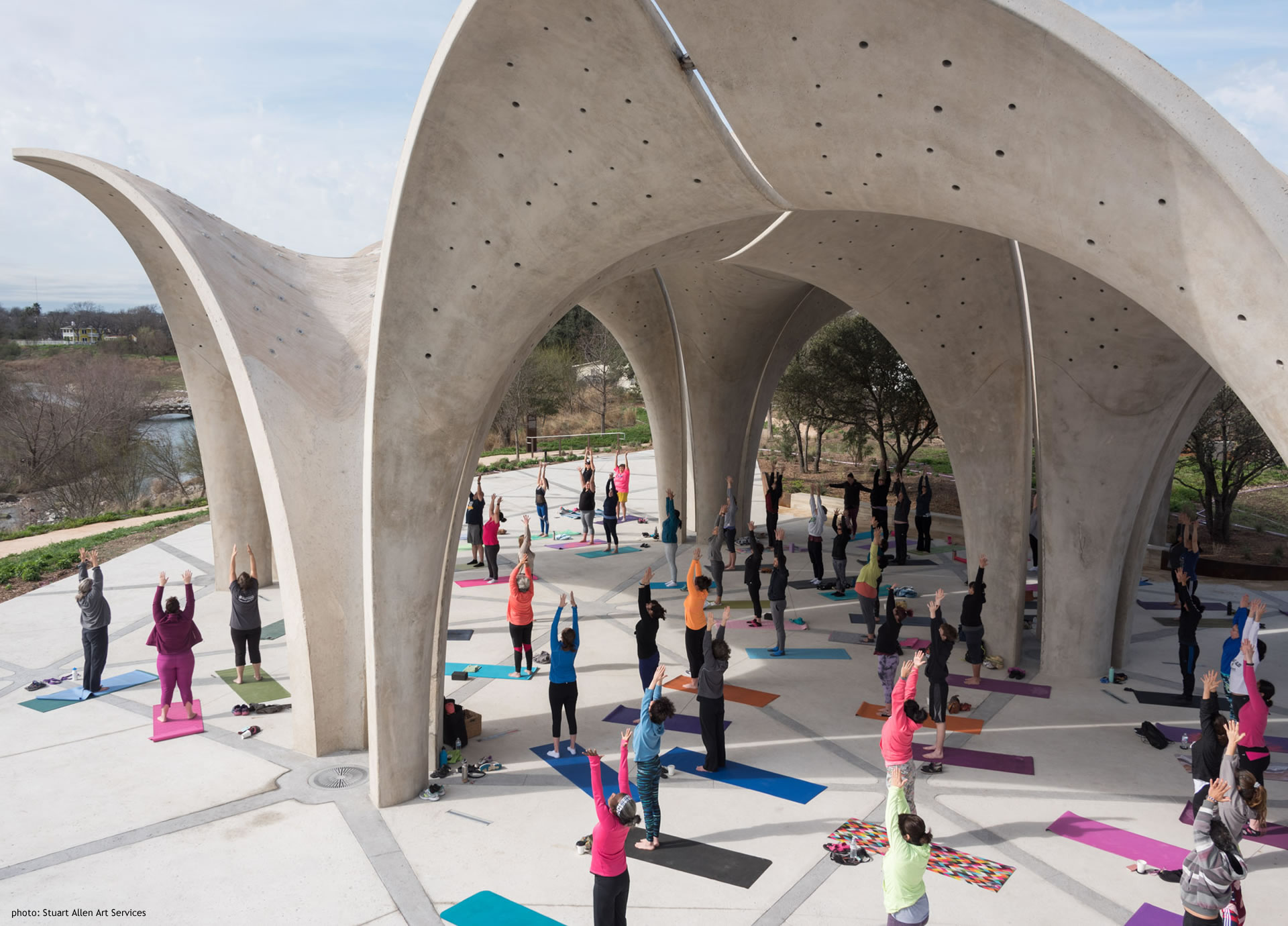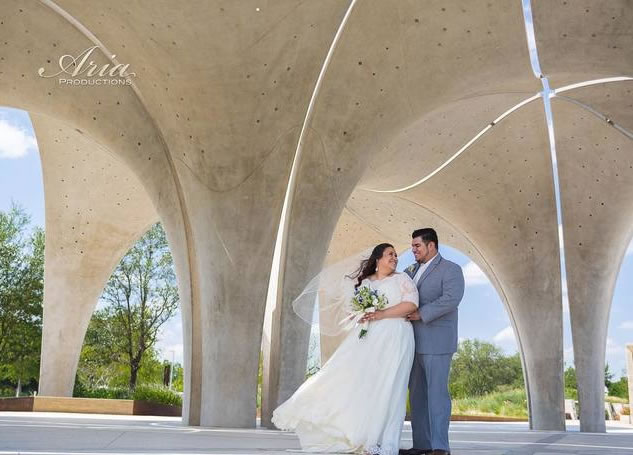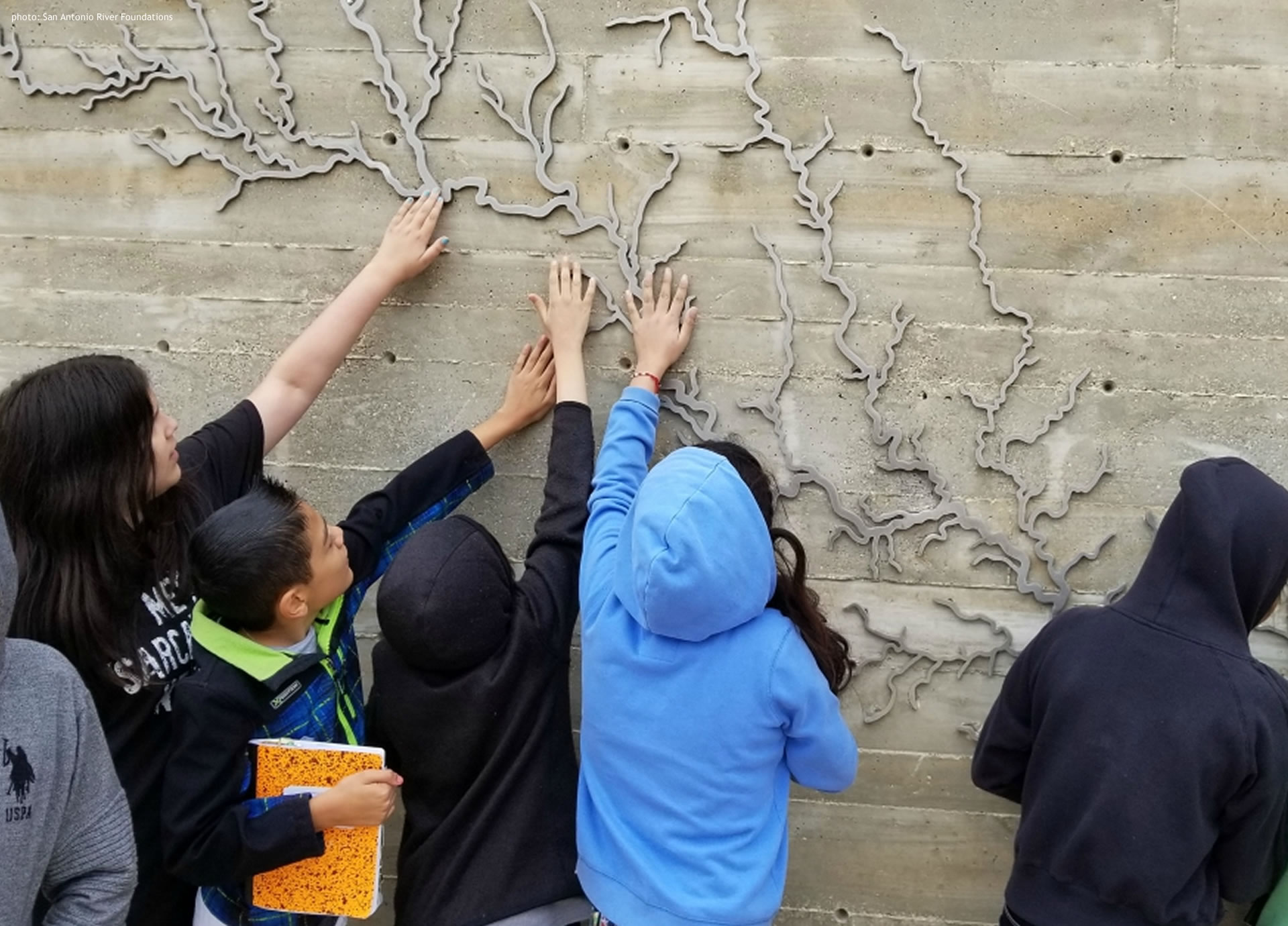
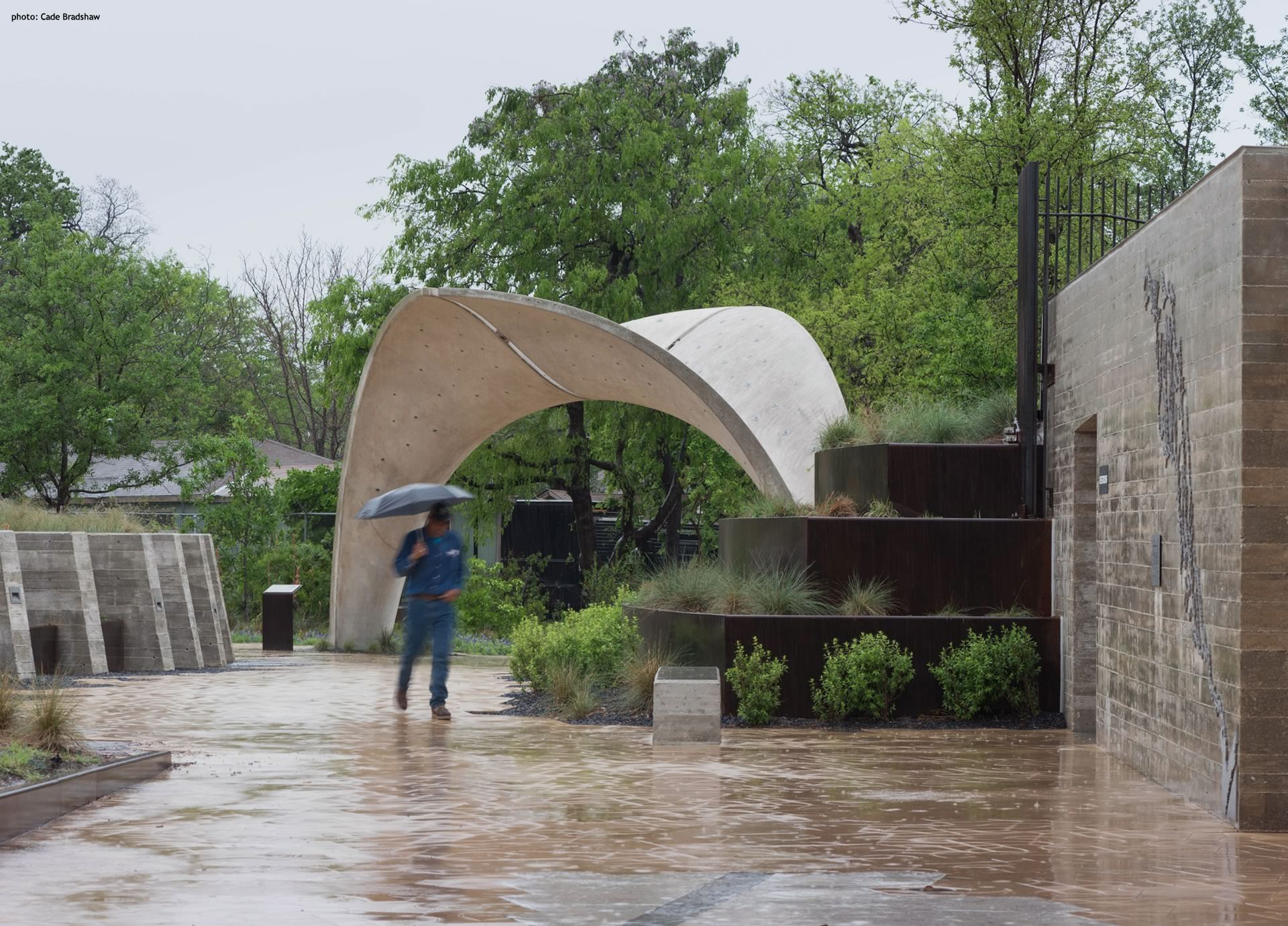

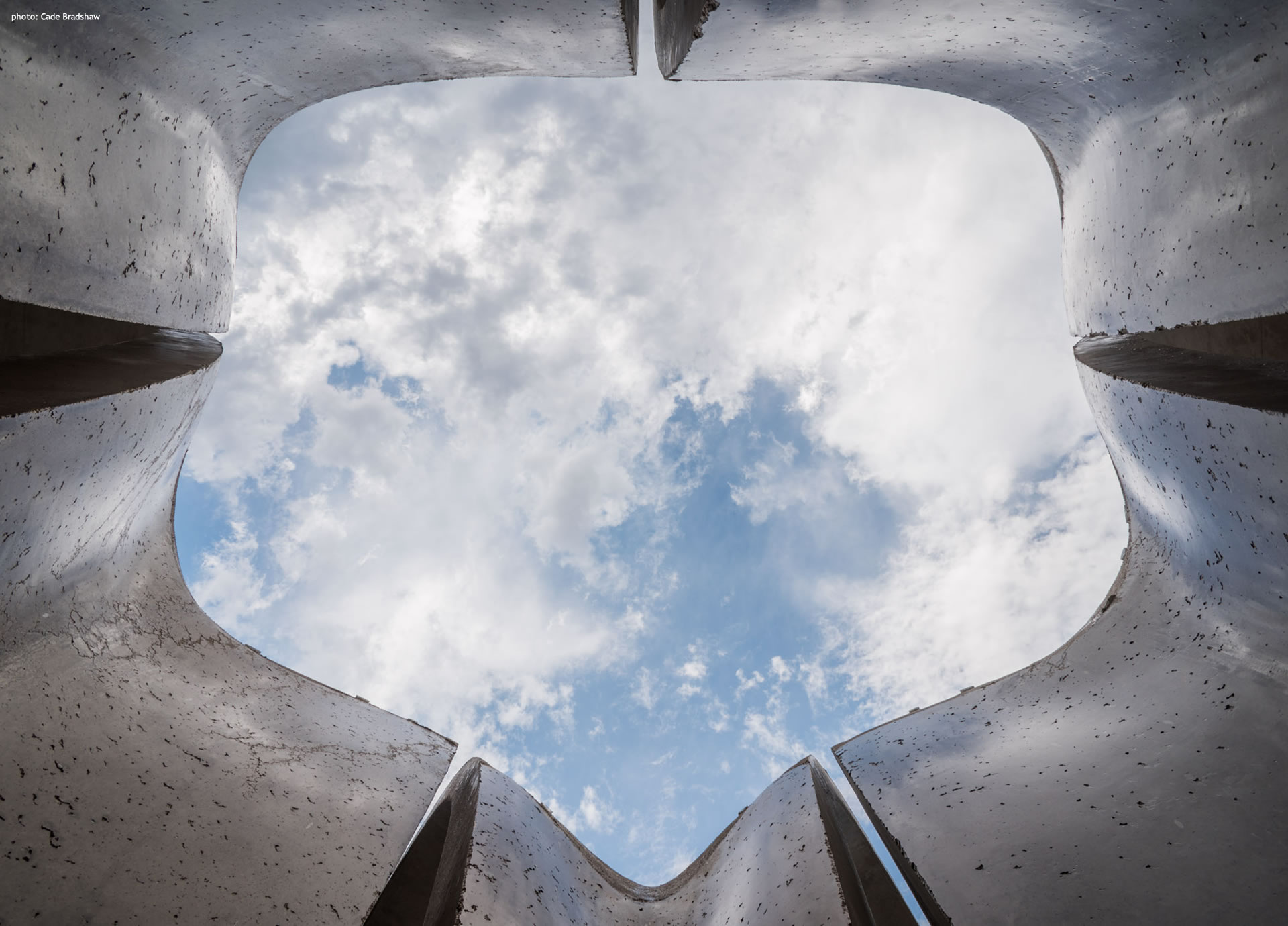
Low Impact Design (LID)
Confluence Park’s low impact development (LID) refers to built systems that use or mimic natural processes which result in the evapotranspiration, infiltration or use of stormwater to protect the San Antonio River’s water quality. Sustainably preserving and continuously improving water quality beginning at the Mission Reach is imperative to continued flood protection and promotion of healthy ecological and hydrological functions for over 200 miles downstream. Confluence park’s LID systems create a functioning, appealing site that treats precipitation and stormwater as a resource rather than a waste product. Deliberate park elements include:
- Rainwater harvesting through the site-wide water catchment system which takes advantage of the pavilion’s geometric design and land/hardscape contouring. The estimated rainwater collection is 286,000 gallons per year.
- Natural water filtration through alluvial soils within an underground cistern measuring 12,600 cubic feet or approximately 100,000 gallons.
- Reduction of impervious services–all pathways and the parking lot are permeable.
- Preserving and recreating natural landscape features through native planting from five South Texas ecotypes which are acclimated to regional weather patterns.
- Managing the movement of stormwater from urban runoff caused by nearby neighborhoods before it reaches the San Antonio River. Slowing of water also reduces erosion, a primary cause of poor water quality.
The San Antonio River Foundation is currently pursuing Net Zero Energy Building Certification via the Living Building Challenge. This is not only a sustainable standard, as seen in LEED (Leadership in Energy and Environmental Design) certification, it is a regenerative standard exceeding LEED.

